Engeneering Easy Project for 5th Graders Youtube
STEM projects that explore kinetic energy
1. Air-powered car
With materials you can easily find around the house, why not get your child to create their very own air-powered car? This teaches them how potential energy stored in an inflated balloon is converted into kinetic energy (or motion).
Learn more: Science Buddies
2. Popsicle stick catapult
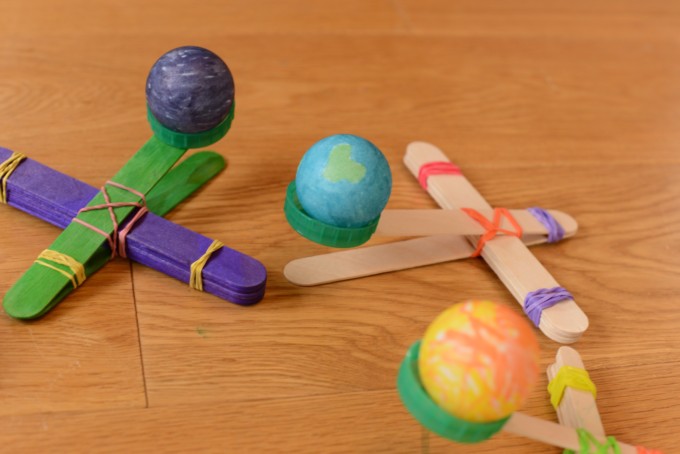
Using a simple combination of elastic bands and popsicle sticks, create your very own catapult. This will not only teach your child about the laws of motion and gravity, but it will also result in hours of fun catapulting competitions.
Learn more: Science Sparks
3. Popsicle stick chain reaction
If you have any popsicle sticks left after creating your catapult, use the rest to create a burst of kinetic energy in this exhilarating chain reaction science experiment.
Learn more: Steve Spangler Science
4. Paper rollercoaster
This project is for those thrill-seeking children who have an affinity for speed. Create a paper rollercoaster and explore how what goes up must always come down. To begin, watch this great video from Exploration Place with your child.
Learn more: Exploration Place
5. Paper plane launcher
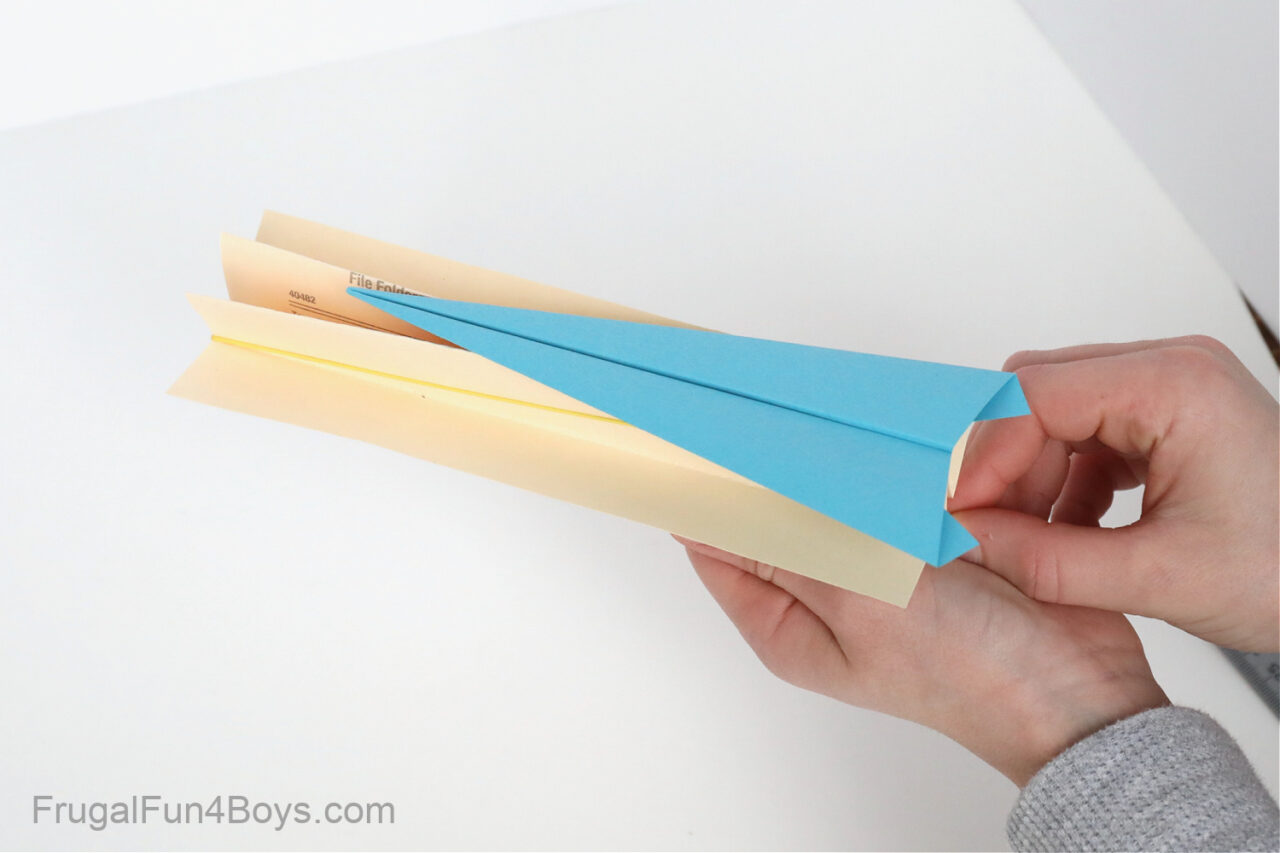
Build a simple paper plane launcher and teach your child how the energy stored in a rubber band is transferred to the paper plane, launching it into motion and hours of fun.
Learn more: Frugal Fun 4 Boys
STEM projects that explore friction
6. Find the hockey puck winner
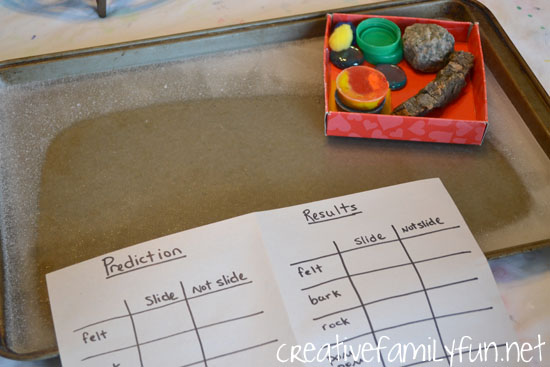
If you have any avid hockey fans under your roof, test how different hockey puck materials glide over ice, showcasing the role that friction plays in determining movement and speed.
Learn more: Creative Family Fun
7. Testing different road surfaces
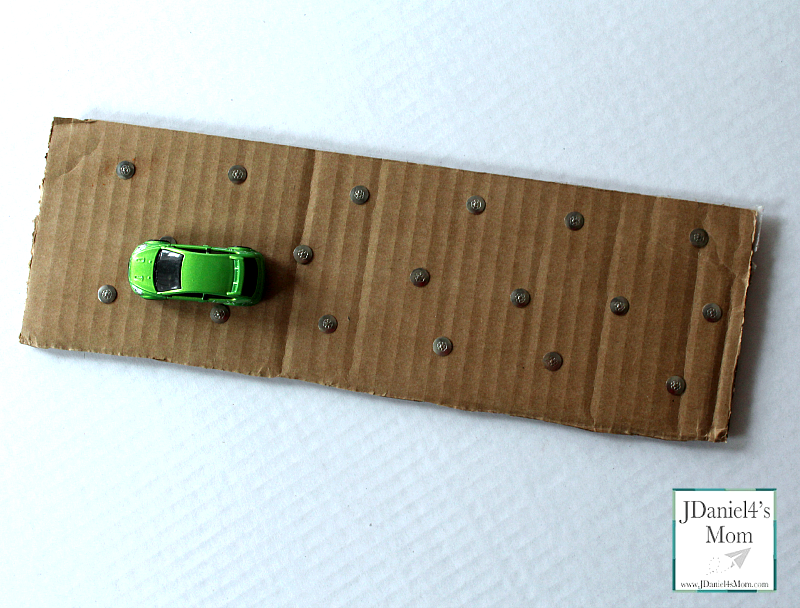
Get your budding 5th grade engineer to construct roads coated with different surface materials and ask them which one they believe will be the easiest for a car to travel over. Test their assumptions with a toy car.
Learn more: JDaniel4's Mom
STEM projects that explore water science
8. LEGO water wheel
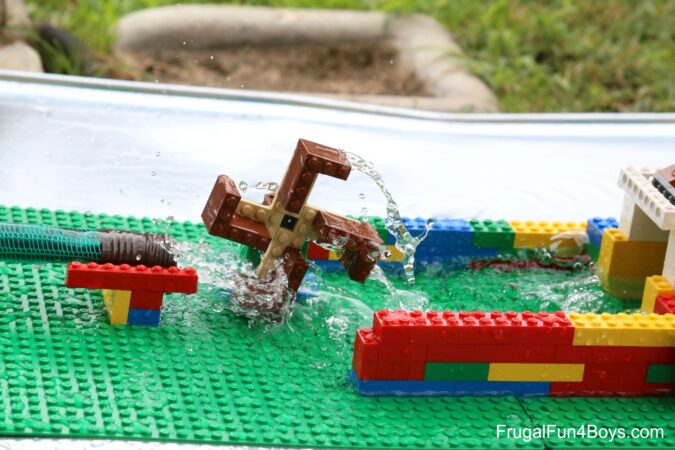
Explore fluid dynamics with this fun LEGO experiment. Test how differences in water pressure impact the movement of the water wheel.
Learn more: Frugal Fun 4 Boys
9. Lift an object with hydropower

After exploring how the water wheel works, why not use this concept to build something useful, such as a hydro-powered device that can lift a small load? This teaches your child about mechanical energy, hydropower, and gravity.
Learn more: Education.com
10. Use water to explore sound vibrations
Combine music and science to explore how sound waves (or vibrations) travel through water, resulting in a range of different pitches. Change the amount of water in each glass jar to fine-tune your next musical solo.
Learn more: Cincinnati & Hamilton County Public Library
11. Soil erosion with plants

If your child is interested in environmental conservation, use this science experiment to explore the importance of vegetation in preventing soil erosion.
Learn more: Life is a Garden
12. Test whether water can conduct electricity
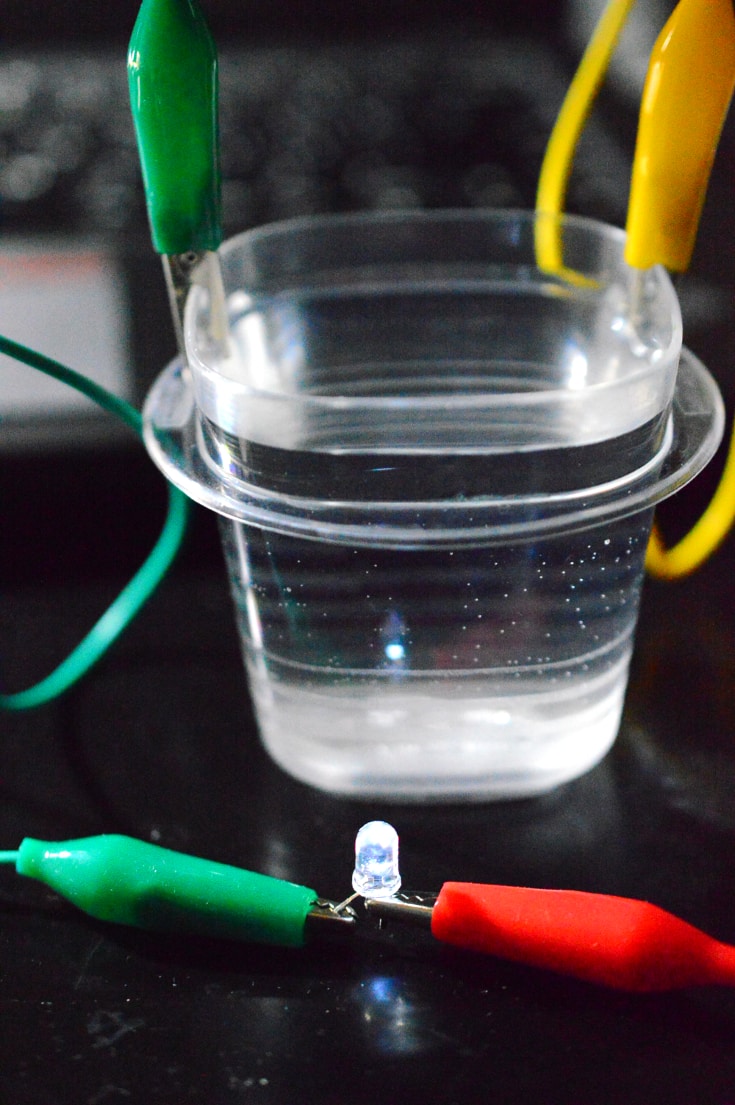
We are always told not to operate electrical appliances near water, for fear of electrocution. Has your child ever asked you why? Set up this simple science experiment to help answer that question.
Learn more: Rookie Parenting
13. Have fun with hydrophobicity
Learn about the difference between hydrophilic (water-loving) and hydrophobic (water-repelling) molecules with magic sand. This experiment is sure to blow your 5th grader's mind!
Learn more: Teaching Mama
14. Dive into density
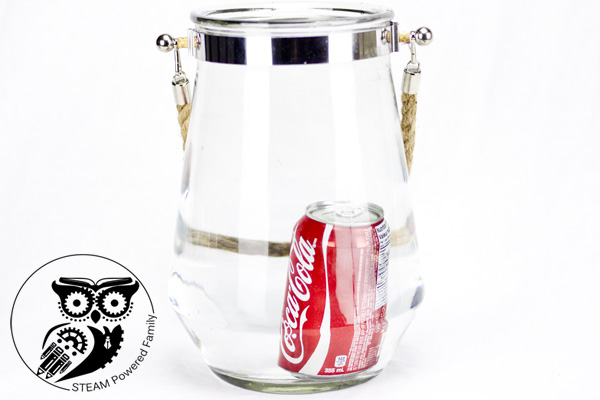
Did you know that if you placed a can of regular Pepsi and a can of Diet Pepsi into the water, one would sink while the other floats? In this simple but fun experiment, learn how the density of liquids impacts their ability to induce displacement.
Learn more: Steam Powered Family
15. Create instant ice
Would you believe me if I told you that it's possible to create ice in a matter of seconds? Dazzle your 5th graders with this fun experiment that will make them think you're a magician, but is actually rooted in the science of nucleation.
Learn more: Steamsational
16. Rising water
If the instant ice wasn't enough to convince your children you're a magician, maybe try this next science experiment, which will teach them about the wonders of air pressure and vacuums.
Learn more: Pebbles Kids Learning
17. Make your own slime (or oobleck)
Teach your children about different phases by creating a slime that has some very weird behavior. By simply adding a little pressure, the slime turns from a liquid to a solid and dissolves back into a liquid when the pressure is removed.
Learn more: BellMuseum
18. Build an Archimedes screw
Have you ever wondered how early civilization created pumps that could move water from low-lying areas to higher ground? Introduce your children to Archimedes screw, an almost magic-like machine that can pump water with a few turns of the wrist.
Learn more: Science Buddies
19. Create a hydraulic lift
Hydraulics is an important component in machines such as wheelchair platform lifts and forklifts. However, have you ever wondered how they work? This experiment will teach your child about Pascal's law and is impressive enough to potentially win them the school science fair project of the year.
Learn more: DIY Projects
20. Build a water clock (with an alarm)
Construct one of the oldest time-measuring machines, a water clock, that has been used by ancient civilizations dating back to as far as 4000 BC.
Learn more: Simple Steps
STEM projects that explore chemistry
21. Create a volcano
Explore how an acid-base reaction between baking soda and vinegar creates carbon dioxide and a resultant volcanic eruption.
Learn more: Mocomi Kids
22. Write magic letters with invisible ink
:max_bytes(150000):strip_icc():format(webp)/letter-showing-invisible-ink-660878839-587e5bd33df78c17b68b2a02.jpg)
If you have some baking soda left over after your volcanic fun, use it to create invisible ink and write magic letters whose words can only be revealed by science.
Learn more: ThoughtCo.
23. Use cabbage for an acid-base science project
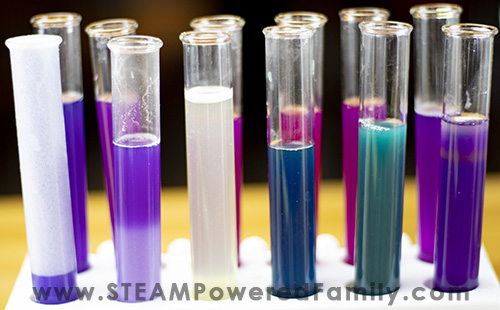
Did you know that red cabbage contains a pigment (called anthocyanin) that changes color when mixed with acids or bases? Leverage this chemistry to create a pH indicator that will teach your child about the difference between acidic and basic materials.
Learn more: Steam Powered Family
STEM projects that explore the power of heat and solar energy
24. Create a solar oven
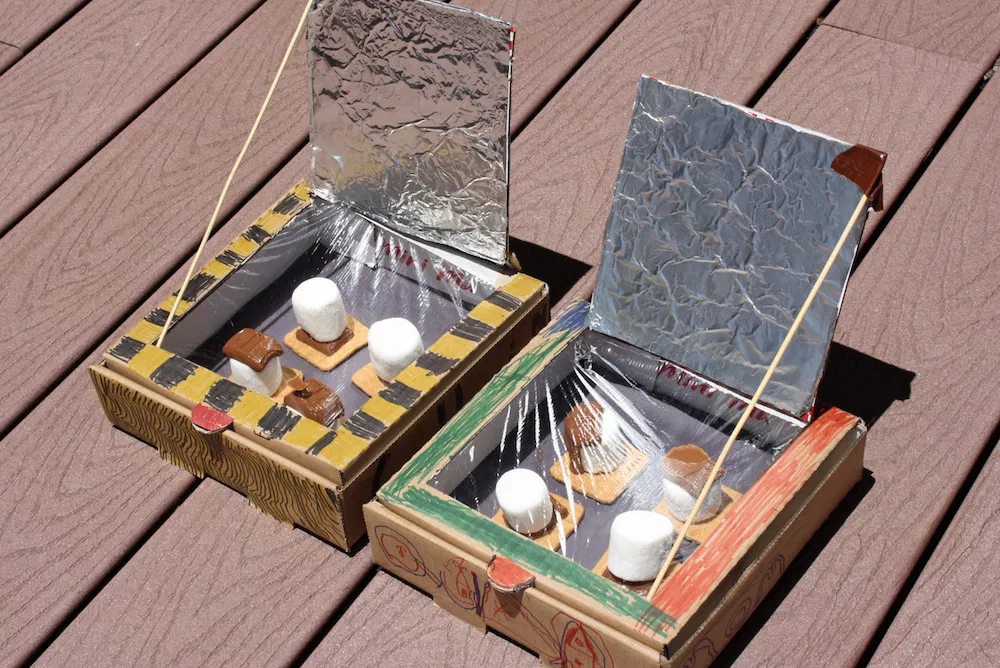
By harnessing solar energy, refraction of light, and a little time, use the sun to create your very own solar oven - all while teaching your child some important scientific and engineering principles.
Learn more: Desert Chica
25. Create a candle carousel
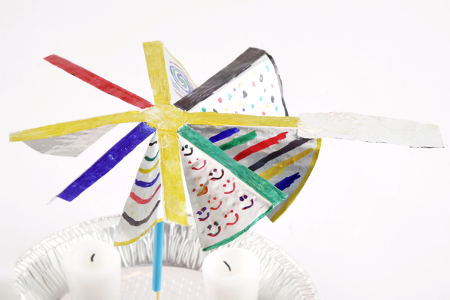
We all know that hot air rises, but it's virtually impossible to see with the naked eye. Teach your children this science concept with a candle-powered carousel.
Learn more: Science Buddies
STEM projects that explore other interesting engineering principles
26. Create your own compass
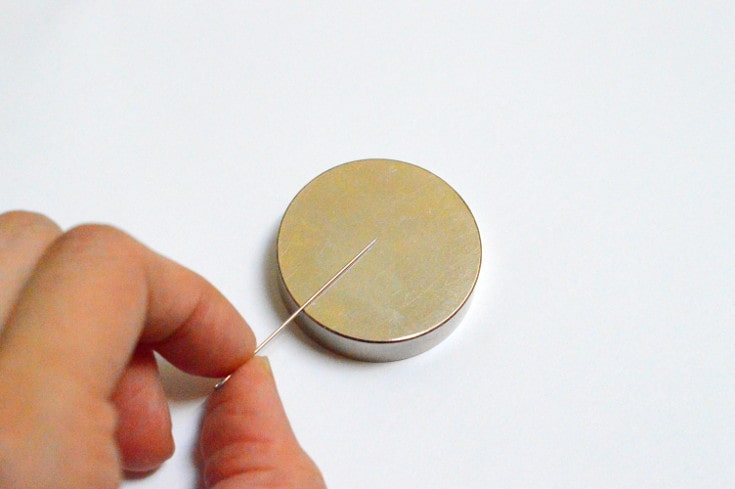
Teach the concepts of magnetism, how opposites attract, and why a compass always points towards the North Pole by building your own compass.
Learn more: Rookie Parenting
27. Create a slingshot rocket launcher
If you want to upgrade the paper plane launcher we covered earlier, why not do so by building a slingshot rocker launcher. Depending on how taut you make the rubber band (in other words, how much potential energy is stored), you could shoot your rocket as far as 50 feet.
Learn more: STEM Inventions
28. Construct a crane
Design and build a crane that practically demonstrates how a lever, a pulley, and a wheel and axle all work simultaneously to lift a heavy load.
Learn more: Siemens
29. Build a hovercraft
While it might sound like something out of a futuristic novel, this STEM activity uses air pressure from deflating balloons to create a hovercraft that seamlessly glides over a surface.
Learn more: Martha Stewart
30. Build a truss bridge
Due to their embedded and interconnected triangular lattice, truss bridges are one of the most effective examples of strong structural engineering. Build your own truss bridge and test the weight-bearing limits of your creation.
Learn more: STEM Inventions
Final Thoughts
Working from home should not mean you have to choose between your children and your career. Rather, using this awesome list of 30 science and engineering projects, keep your children busy for hours while still imparting a 5th grade STEM education. Every parent can (and should) demonstrate this superpower, especially since I suspect that your child's favorite superhero lives right under your roof: it's you.
Source: https://www.teachingexpertise.com/classroom-ideas/5th-grade-engineering-projects/
0 Response to "Engeneering Easy Project for 5th Graders Youtube"
Post a Comment